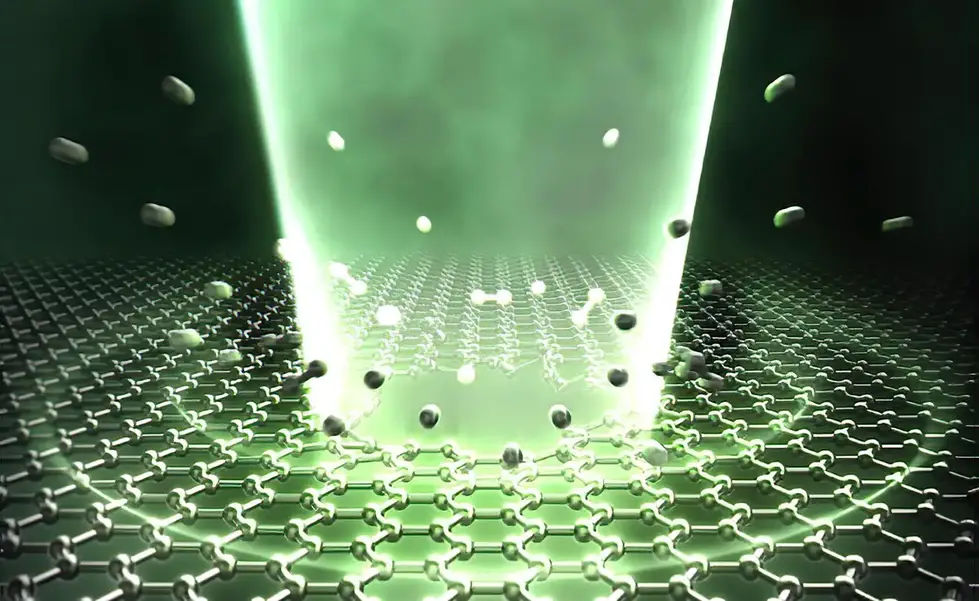Manipulating graphene and its shape is urgent for making that 2D carbon structure a useful tool for different purposes and components. The femtosecond lasers can make holes for different types of components in the graphene layer. The problem with 2D carbon and other 2D materials is this.
Those materials lose their abilities in 3D structure. There is a possibility to make multi-layer graphene but in that case, those layers must be separated from each other by using the DNA bites that act as nano springs or fullerene-nanotube towers.
"Illustration of a graphene film being hole-drilled by laser irradiation. The size of the carbon atoms is exaggerated and differs from the actual size. Credit: Yuuki Uesugi et al". (ScitechDaily.com/Light-Speed Advances: Graphene Nanoprocessing With a Femtosecond Laser)
But in that case, there must be some kind of place. Where engineers can install those auxiliary nanostructures. The thing that makes graphene interesting is that is pure carbon. That makes it possible to create mono-frequency radiation by stressing that carbon structure with electromagnetic radiation.
Researchers can use these kinds of things in communication tools and even in electromagnetic levitation tests. The idea is in those tests the system creates mono-frequency electromagnetic oscillation that turns to pressure signals which push those objects above.
If there is a hole in the graphene layer, and a laser ray will shoot through it that system can act like a thermal pump. The laser ray will pull energy out from the graphene layers. And that thing might make it possible to create new and powerful microprocessors. If a laser ray will shoot through the multi-layer graphene that thing will cool the surface, and then it can use for making the infrared signature lower.
Theoretically is a very easy thing to cover even large layers using graphene. The problem is that graphene must be separated from the layer for maximum benefit. The separated graphene layer connected with the metal layer by using the nano-springs makes the new type of system possible. The graphene can act as nano-armor and those nano-springs will receive part of the impacts that affect that 2D nanolayer.
https://scitechdaily.com/light-speed-advances-graphene-nanoprocessing-with-a-femtosecond-laser/



No comments:
Post a Comment
Note: Only a member of this blog may post a comment.